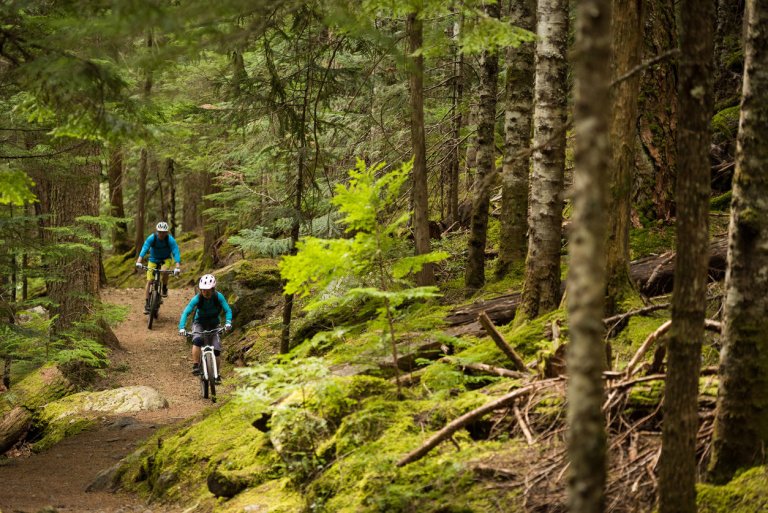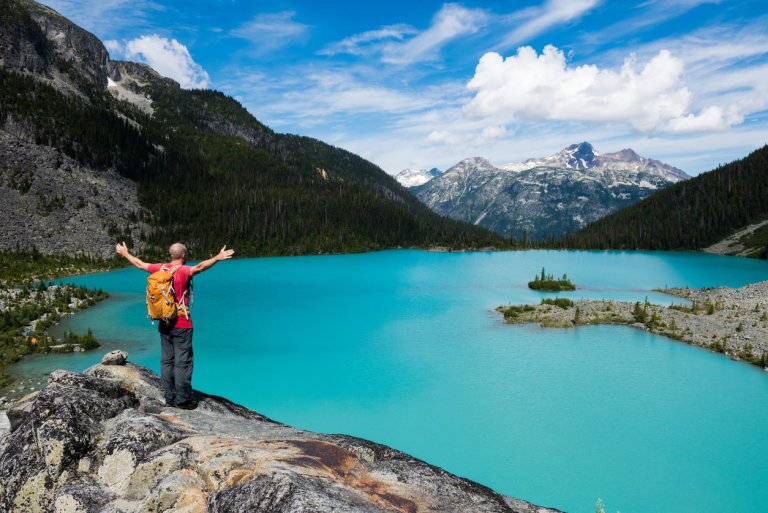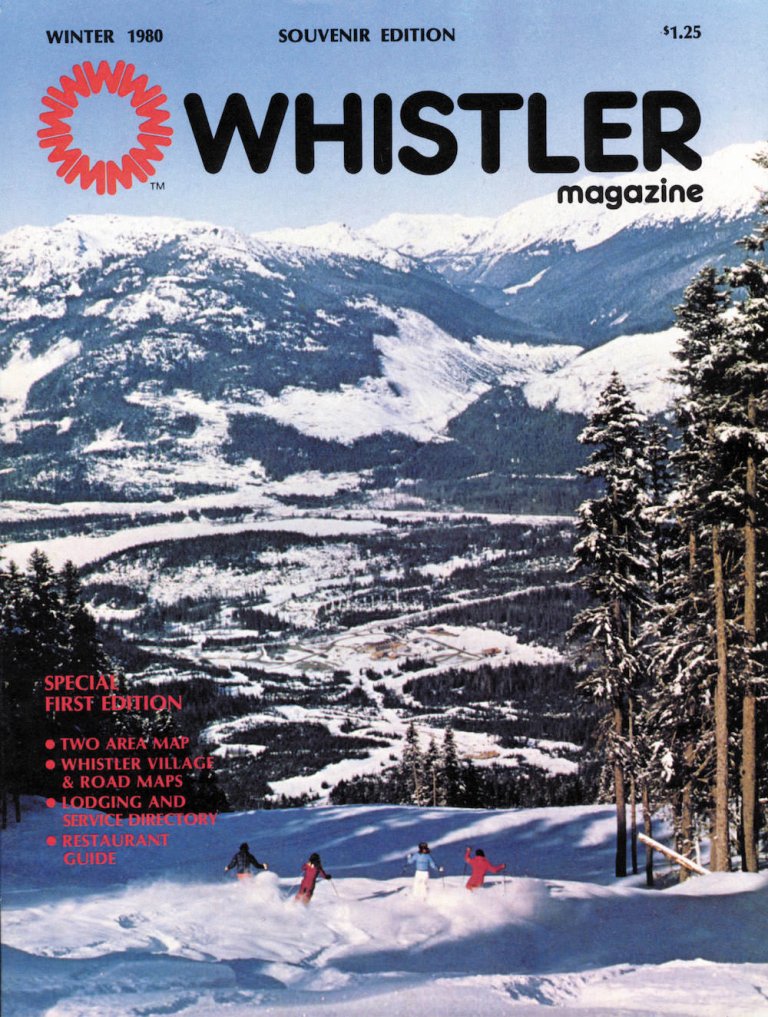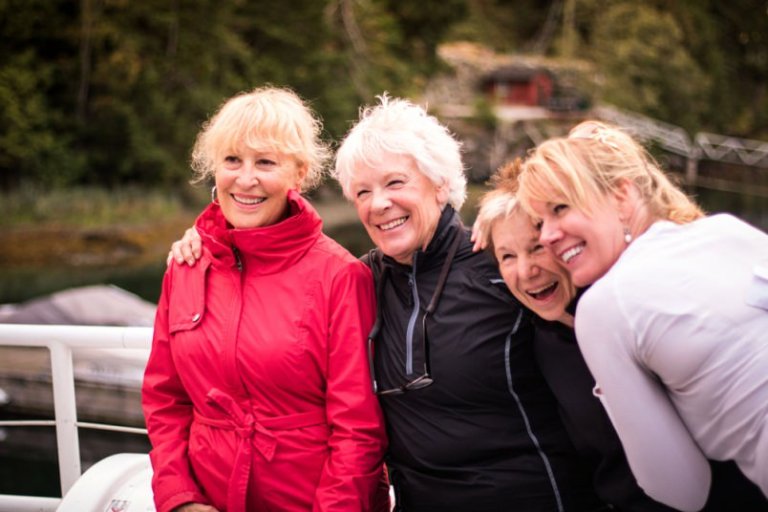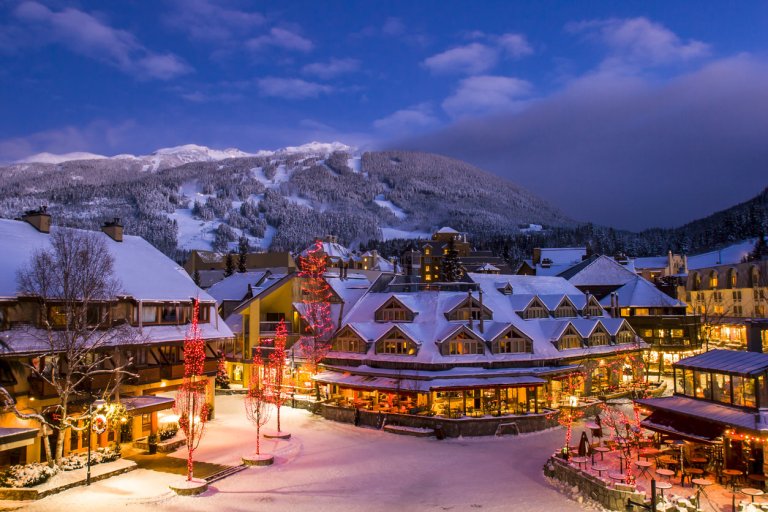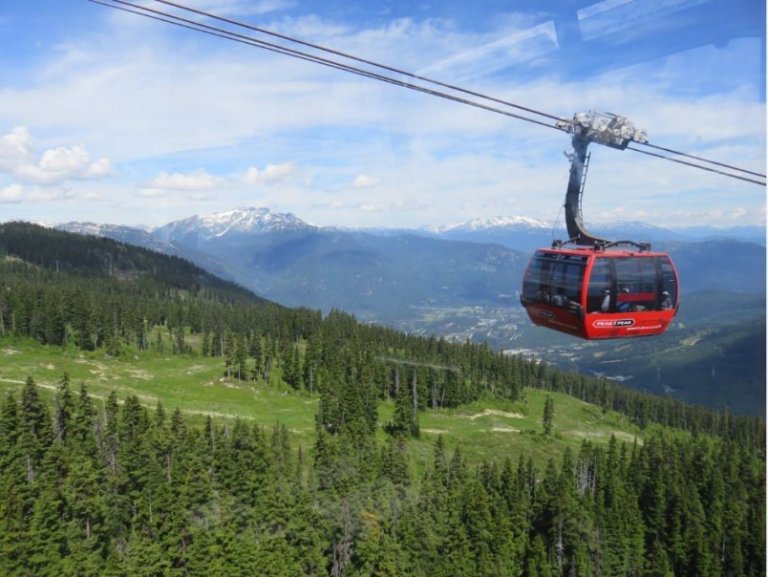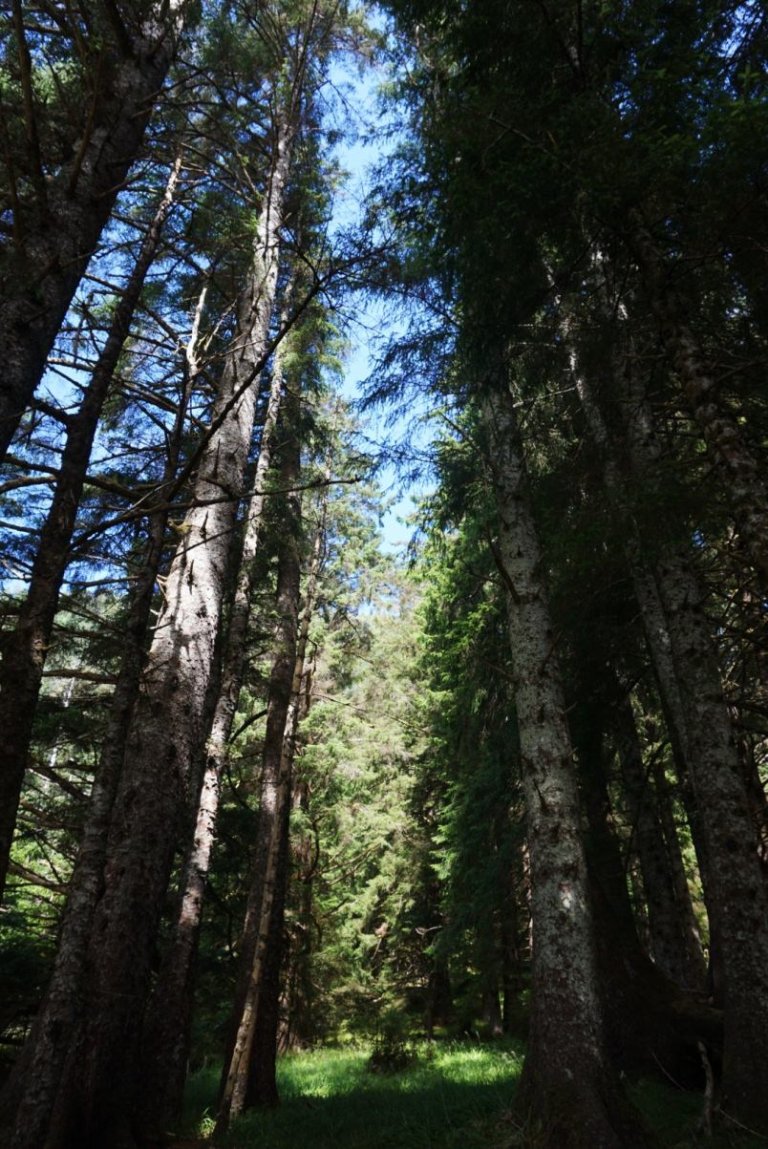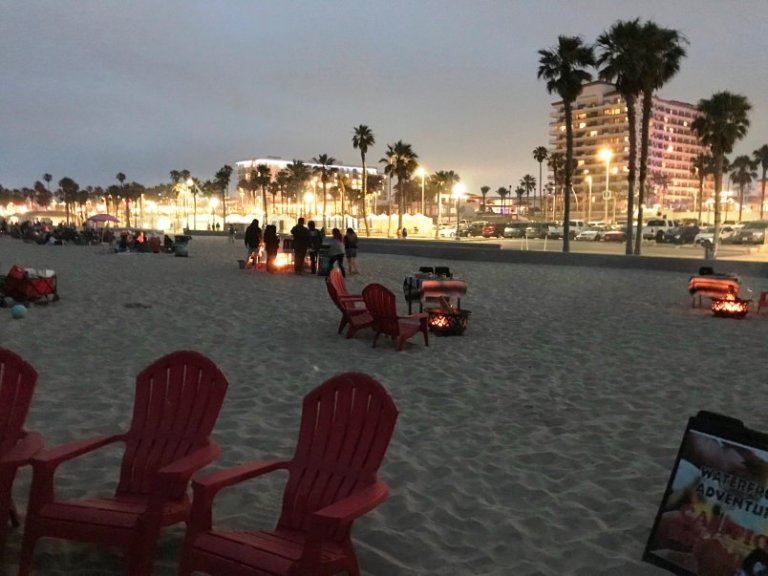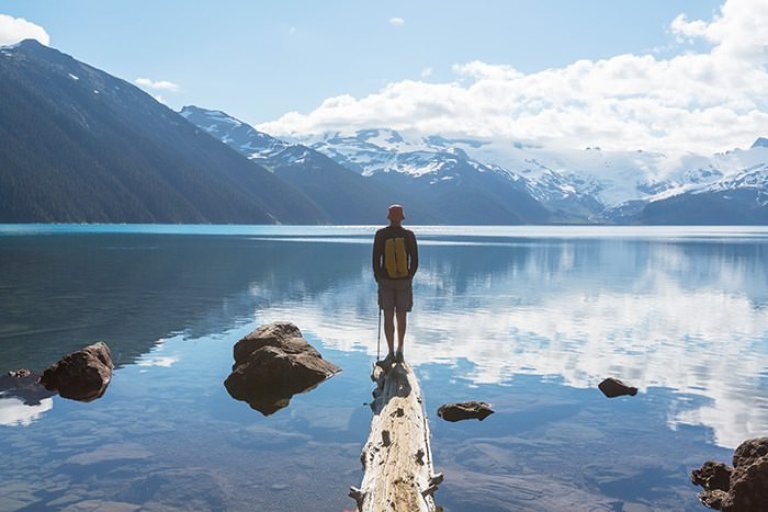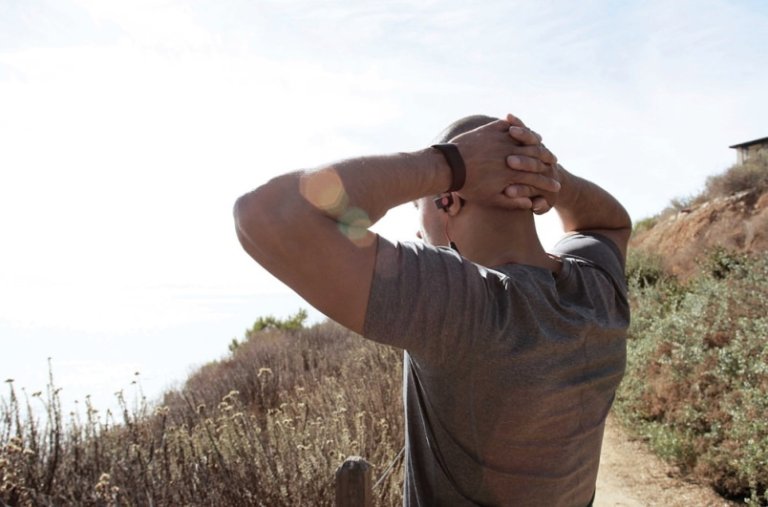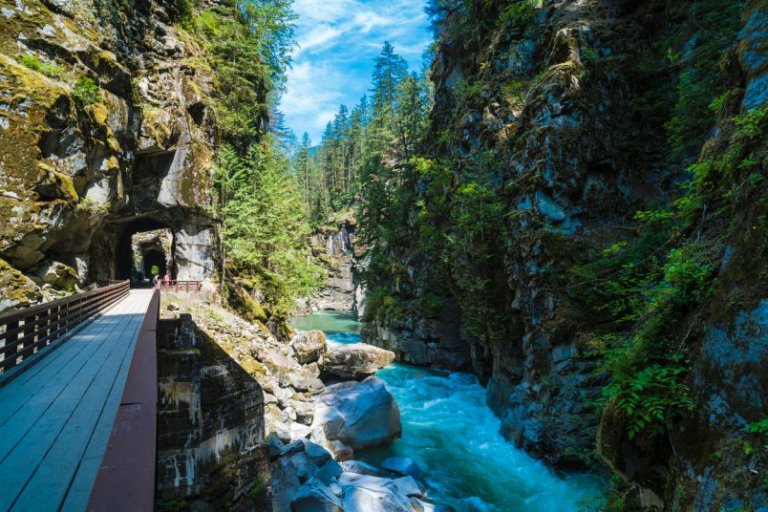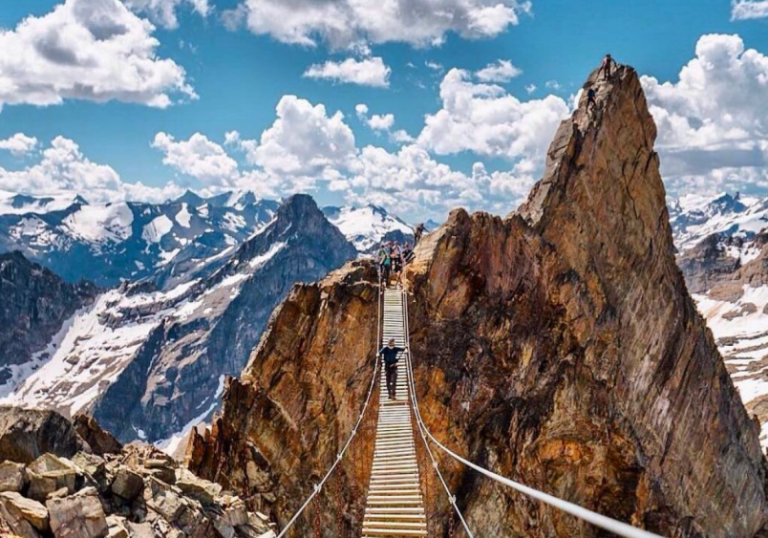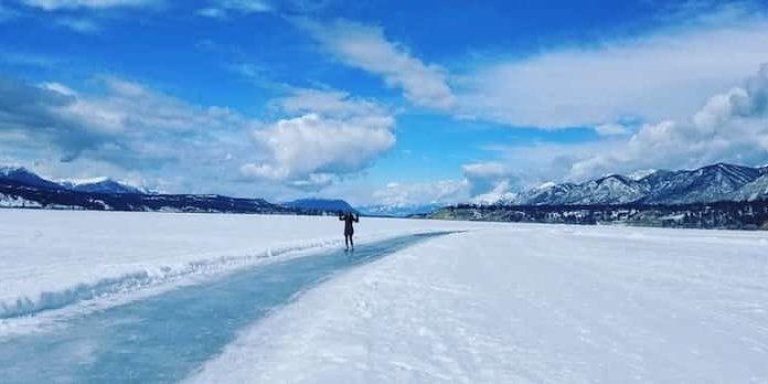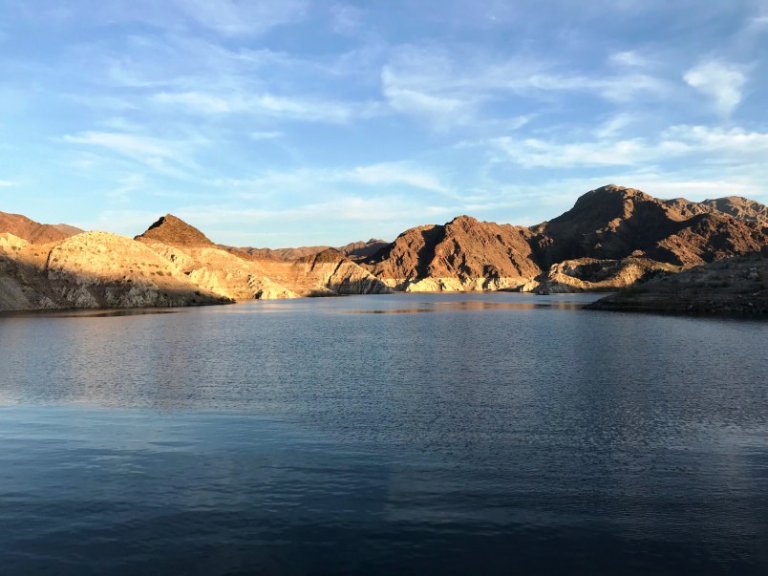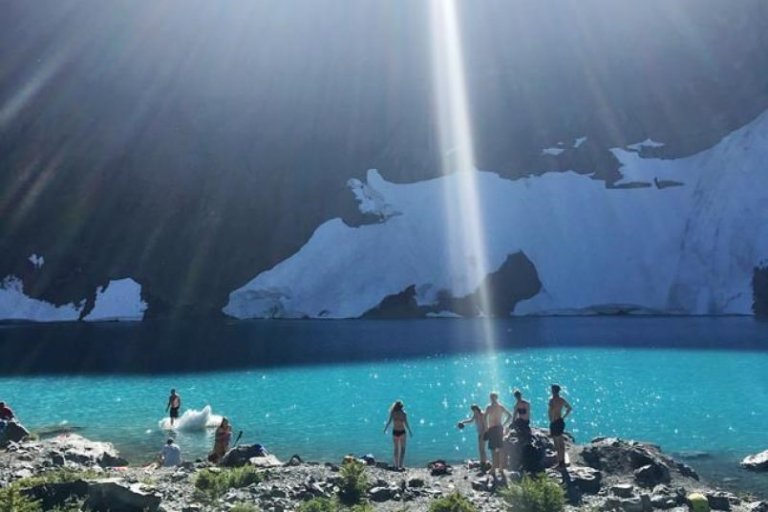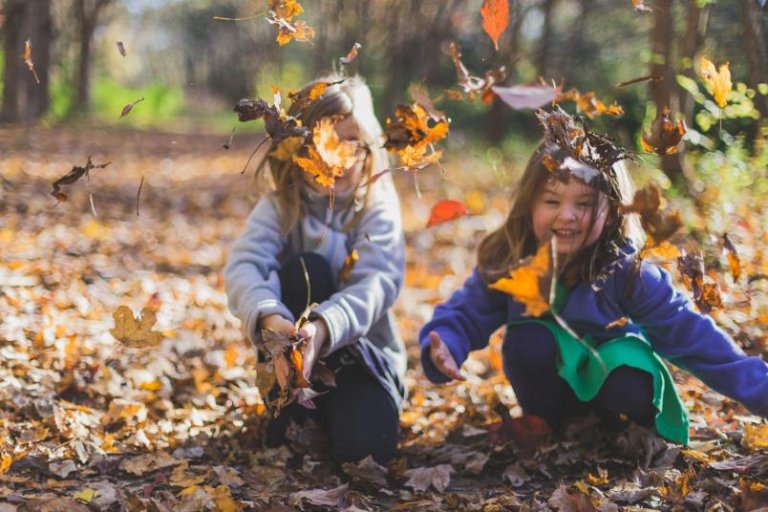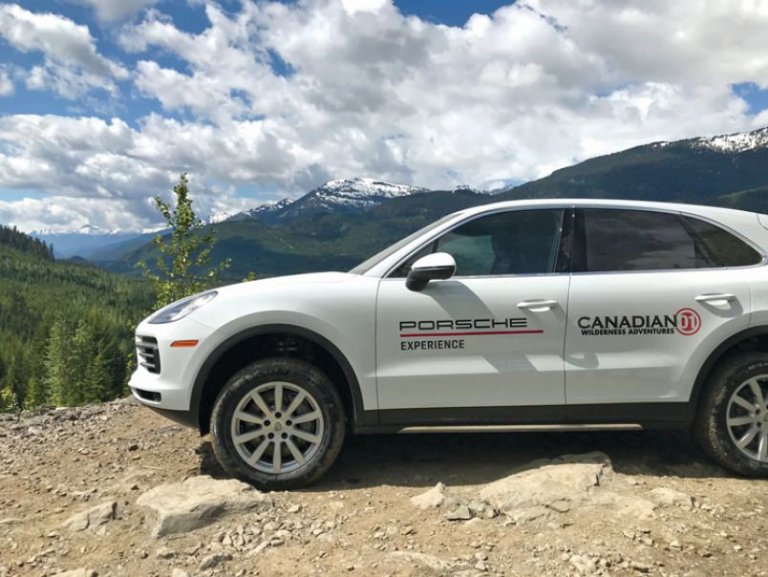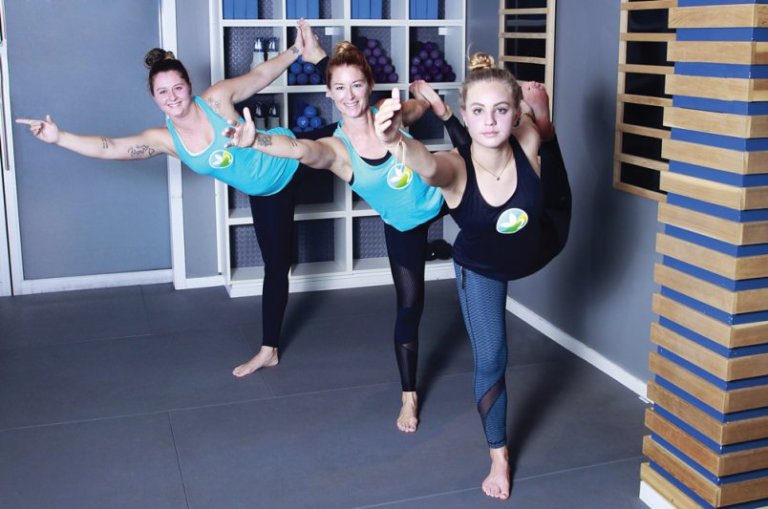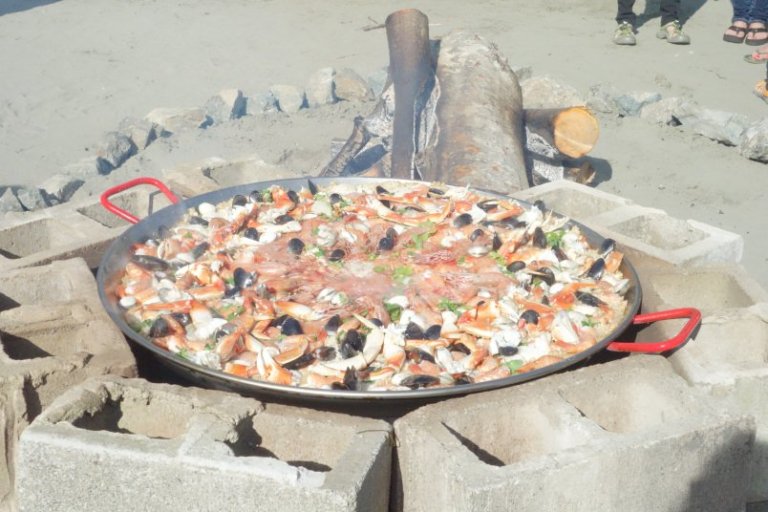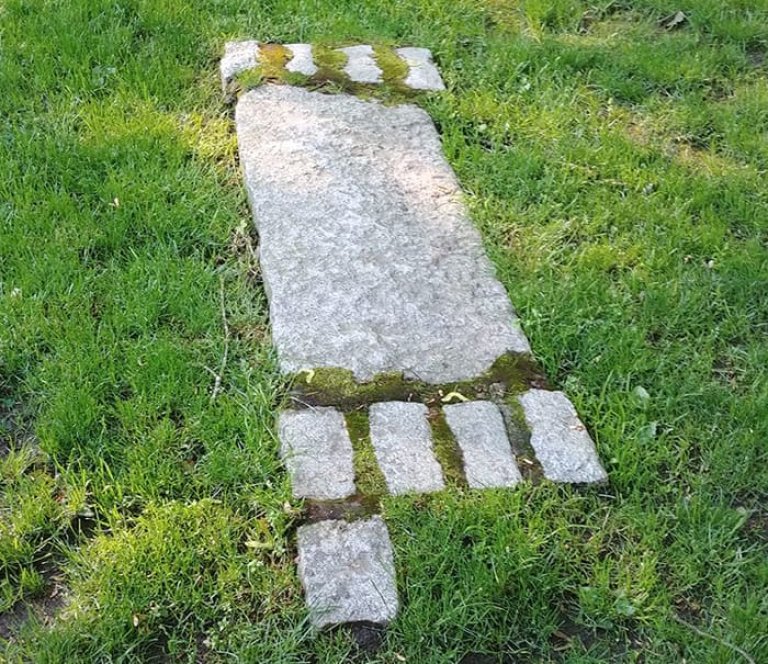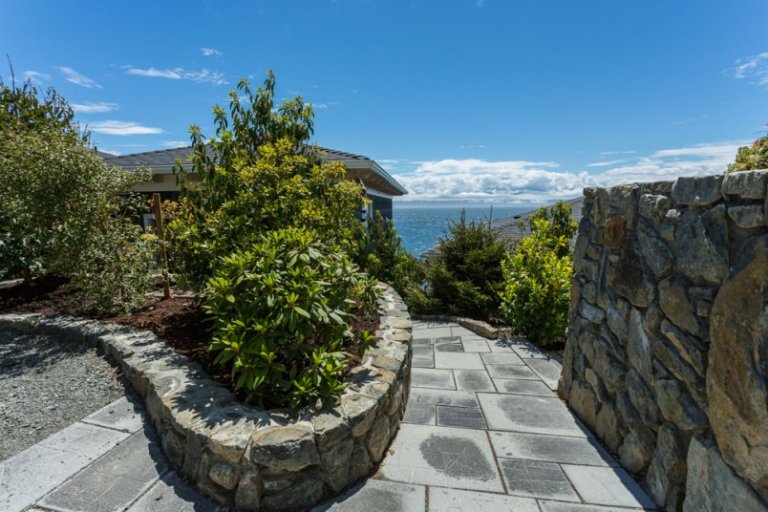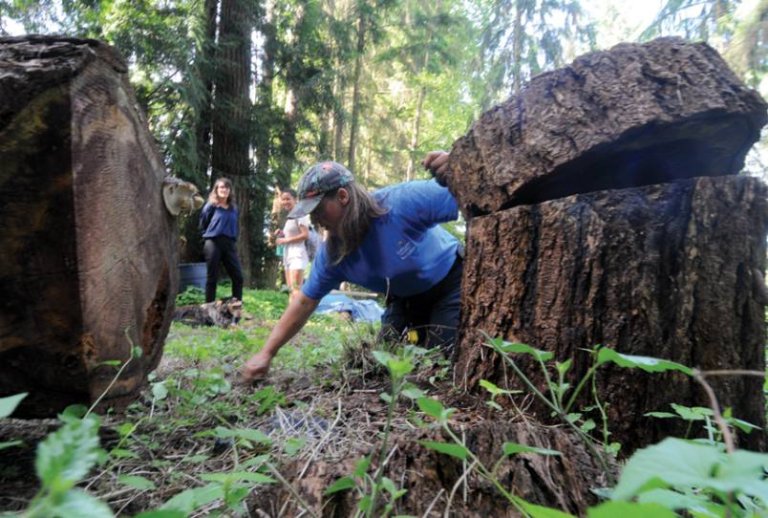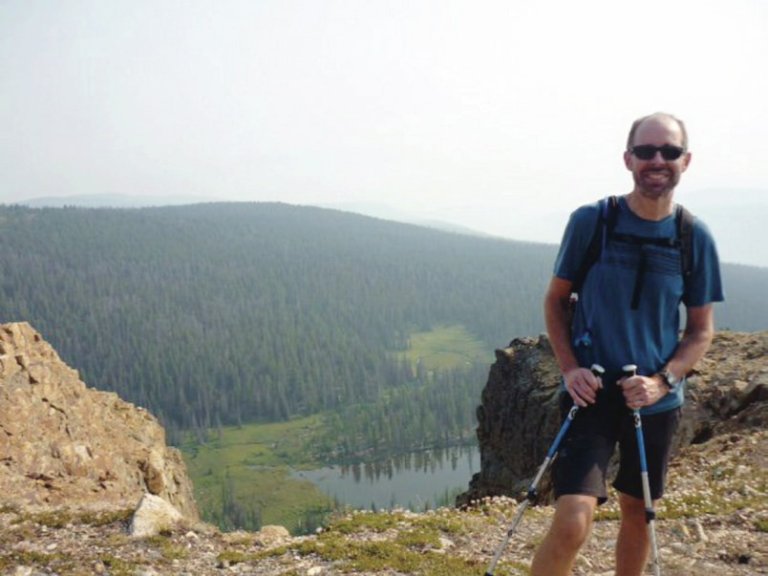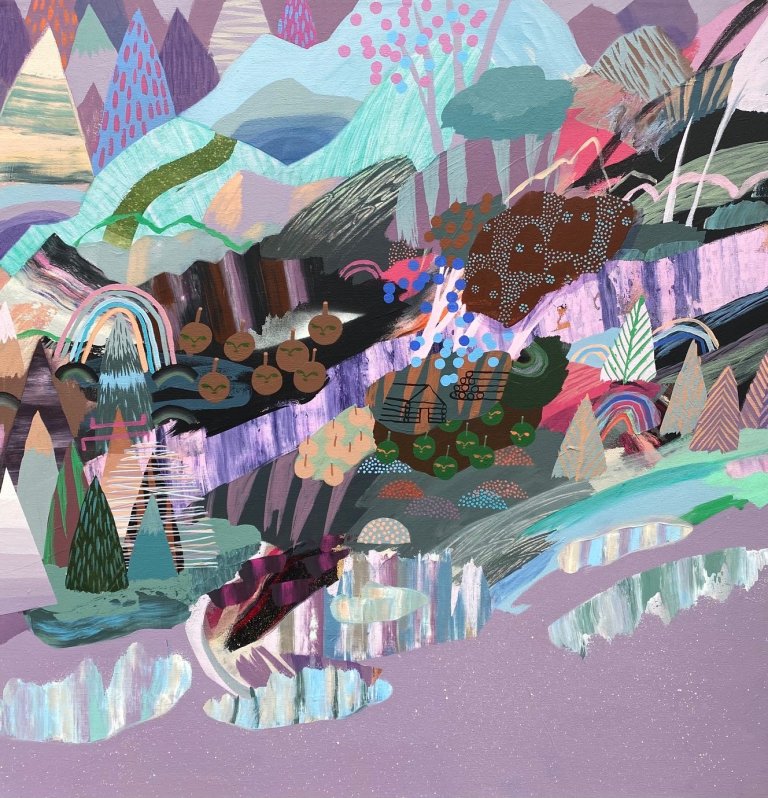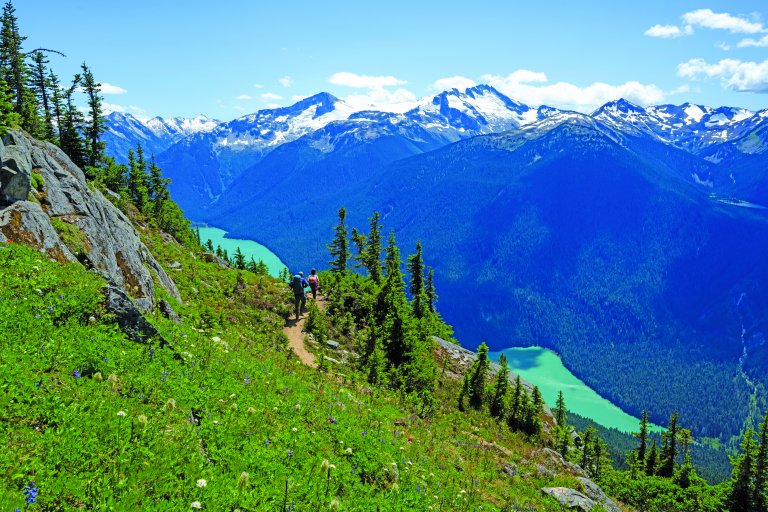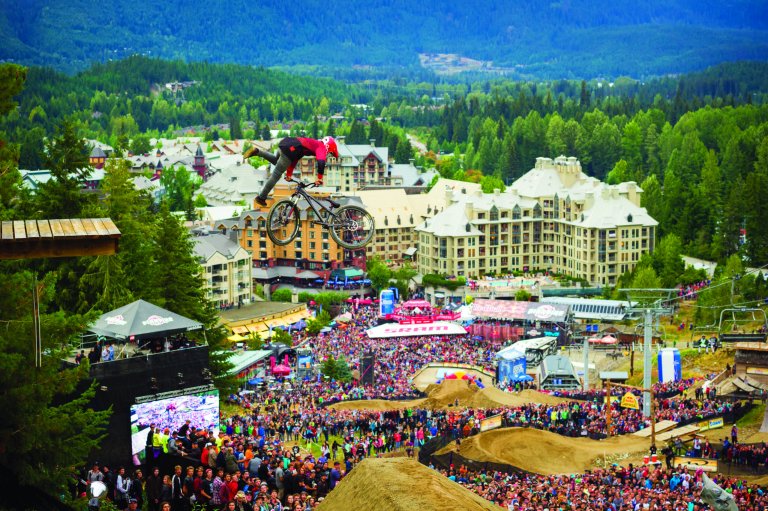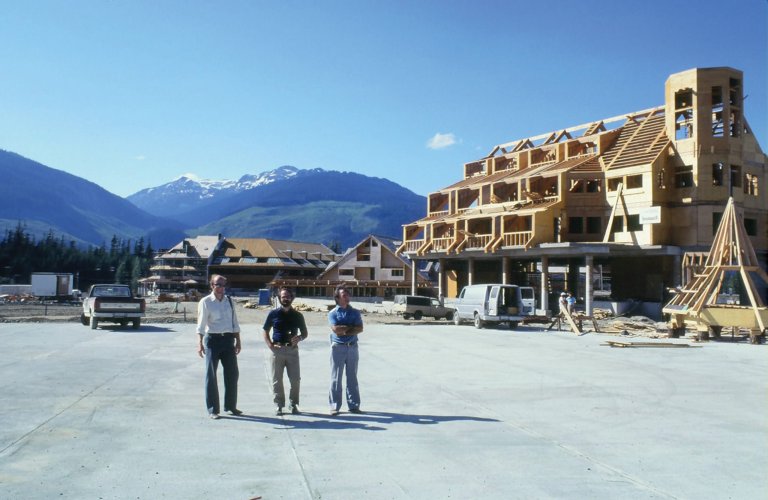Back
Backcountry Bounty
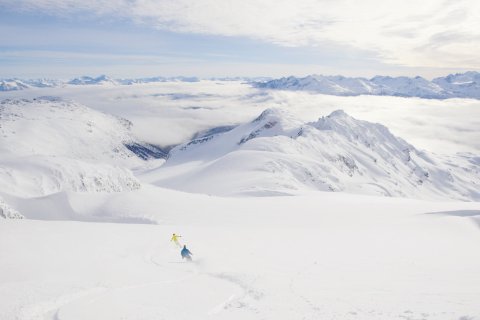
Whistler is bracing for a busy season beyond the ski area boundaries. The backcountry is beckoning like never before as skiers and snowboarders look to escape the crowds and keep their social distance. Never mind the peace and solitude, the connection to nature, that the backcountry provides in these uncertain times.
And so, the backcountry, once the bastion of a small, select group of skiers, is now becoming accessible for all, helped along by advances in equipment and training. Just ask industry insiders.
“We had a mad panic of backcountry gear sales when (Whistler Blackcomb) closed early last winter,” explains Larry Falcon, manager of the Escape Route backcountry store, located in Whistler’s Marketplace. “With people wanting to ski socially distanced around COVID-19, and a reservation system in place for skiing in the resort this winter, we’re seeing a big growth in sales with novice and intermediate backcountry skiers.”
And Whistler is where many will choose to take their first steps into the winter wilderness. All who venture out however, should be prepared with the equipment and skills to keep them safe, warm and dry; and all those that do, will undoubtedly attest that it’s worth the effort.
The Spearhead Range
In Whistler, the most popular ski touring area is by far the Spearhead Range, accessible from the Blackcomb Glacier gate on Blackcomb Mountain. In less than 45 minutes of climbing a skin track, a pathway in the snow made by previous tourers, skiers can leave whirring lifts and throngs of people behind to access untouched powder slopes, steep couloirs and stretching glaciers. There are routes that conveniently loop back to the Blackcomb in-bounds ski runs and plenty of options to stay out for multiple descents before returning back to Whistler Village via Lakeside Bowl.
Those tackling the coveted Spearhead Traverse (a two- to three-day ski touring expedition requiring winter camping) begin their journey in the Spearhead Range before looping approximately 30 kilometres of glaciers and mountain passes back to Whistler Mountain. This expedition requires strong physical fitness, advanced ski ability to tackle the steep terrain, glacier travel experience, and both equipment and skills for self-rescue. Hiring a guide is highly recommended.
Navigation without proper maps (and experience reading them) can lead to parties getting lost or stranded. Make smart choices taking avalanche conditions and weather into account.
From the Whistler Mountain side of the Spearhead Traverse, ski tourers can hike up to the Flute Summit and exit into an area known as the Musical Bumps in the Fitzsimmons Range. This is the most moderate backcountry terrain accessible from Whistler Blackcomb and is a popular spot for beginner ski tourers.
At the far end of the Musical Bumps, overlooking Russet Lake, the recently completed Kees and Claire Hut provides skiers with an option to sleep in the backcountry. Modest bunk-style beds and self-catering kitchen facilities allow for up to 38 people to stay at the hut during normal operations, when COVID-19 protocols are not in place. From here ski tourers can climb and ski the nearby mountains of Fissile and Whirlwind, the slopes of the Overlord Glacier and the adjacent Cowboy Ridge.
This is the first of three huts planned for the Spearhead Traverse.
"The continuing rise of popularity in backcountry skiing, evident throughout the world, has only accelerated from the COVID-19 impacts,” says Jayson Faulkner, chair of the Spearhead Huts Society. “The backcountry in Sea to Sky will likely be busier than ever. The demand for backcountry huts and infrastructure will in turn be bigger than ever and arguably, more important than ever for safety and management.”
Callaghan Country
If you are looking for a more luxurious backcountry experience, the Journeyman Lodge in Callaghan Country provides a more comprehensive accommodation with meals and amenities such as a secluded traditional Finnish sauna. The ski terrain in Callaghan Country has a variety of options with plenty of tree skiing, perfect if your stay coincides with stormy weather. The Callaghan Valley is known to receive up to 30 per cent more snow than Whistler Blackcomb, making it a backcountry powder paradise.
“You could consider ‘Callaghan Country’ Whistler’s secret snow stash,” says Callaghan Country President Brad Sills. “Over the past four decades, we have sculpted small scale wilderness experiences to fit into this special landscape. We consider the Journeyman Lodge a testimony to the roots of Whistler's early ski community and their passion for wilderness and backcountry skiing.”
Access to the Journeyman Lodge is by snowcat shuttle or by Nordic skiing from the carpark area in the Callaghan Valley, approximately 20 minutes south of the Village.
Know Before You Go
Have a plan before you head into the backcountry. The area beyond the ski area boundary is not avalanche controlled. It is critical to be aware of the avalanche conditions at the time.
Be prepared for self rescue. You must have the proper tools with you—probe, transceiver, shovel—and you must know how to use them.
Have some prior knowledge of what to expect out there: Take the two-day Avalanche Skills Training (AST) Level 1 course before venturing out. Whistler has several guide bureaus and outfitters that hold this course on most weekends throughout the winter.
Make sure your phone is fully charged and you know how to use the technology such as dropping pins.
For more information on safe winter backcountry travel, head to avalanche.ca
By: Whistler Magazine
GuidedBy is a community builder and part of the Glacier Media news network. This article originally appeared on a Glacier Media publication.
Location
Related Stories
-
Local Attractions Whistler
Top Summer Activities in Whistler
The snow is melting, the birds are chirping, and the flowers are starting to bloom. Sumemr has finally arrived in Whistler! If...
-
Beauty & Wellness
Summer Hikes in Vancouver: A Detailed Guide
If you're looking for a great way to take in the sights and sounds of summer, consider going on a hike. Vancouver is home to...
-
Healthcare
5 Stretch Exercises to Ease Your Back Pain
Back pain is problematic for many people, and it may be especially cumbersome for individuals who work from home on their...
-
Photography Whistler
Four Decades of Telling Whistler’s Stories
For a Whistler photographer, few things beat landing the coveted front cover of a ski magazine. Greg Griffith knows. SKI,...
-
Cruises
5 ways to experience Desolation Sound
Sponsored Content Go Cruising The 4-night Desolation Sound Wilderness Discovery Cruise is a sensational experience unlike...
-
Local Attractions Vancouver
8 awesome things to do in Whistler besides ski and snowboard
While skiing and snowboarding are a great deal of fun, Whistler offers a plethora of fun activities that you must try. From...
-
Local Attractions Vancouver
Escape to Whistler
Handcuffed inside a jail cell, joined by my husband, his daughter and her family, we began a frantic search for the keys we...
-
Local Attractions
Luxury and eco-wilderness adventures meet in Haida Gwaii
When I set off for a five-day trip to the new Ocean House Lodge in Haida Gwaii, I was expecting a luxurious eco-wilderness...
-
Tours Vancouver Island
Rome's treasures revealed on foot, by bicycle
Like hordes before us, we entered Rome through its northern gate. We had rented a terrace apartment in an old marble-filled...
-
Exercise Classes Richmond
Supporting moms through prenatal and postnatal workouts
There are many challenges to exercising and eating well during pregnancy, from morning sickness in the first trimester to...
-
Tours Richmond
The best of Huntington Beach -- in 36 hours
Set against a backdrop of 10 miles of pristine white-sand beaches, part of the draw of Huntington Beach CA is that...
-
Local Attractions Vancouver
The ultimate guide to the most remarkable summer hikes and trails in B.C.
If you live in Vancouver, you’re acutely attuned to the changing of the seasons. The cold, wet winters let up slowly: sunny...
-
Fitness Shoes & Apparel Vancouver
This activewear brand is giving away free men’s workout tees
Sponsored Content Vancouver-based Strongbody Apparel is back at it again, this time giving away men’s workout tees. Having...
-
Local Attractions
This B.C. hike takes you through a network of mysterious tunnels
Built in the early 1900s, the Othello Tunnels were constructed by the Canadian Pacific Railway to link the Kootenay Region with...
-
Local Attractions New Westminster
This B.C. suspension bridge soars 2,000 feet high in the mountains
If you feel intense trepidation upon crossing the Capilano Suspension Bridge, the Mount Nimbus Suspension Bridge might not be...
-
Local Attractions
This jaw-dropping frozen lake in B.C. has the longest skating pathway in the world
While it isn’t uncommon for a lake to freeze over in B.C., not all frozen lakes are created equal. Take, for...
-
Hotel Vancouver
Vintage hotels double as city tourist attractions
Hotels that have been around for 80 years or more can cost a fortune to keep in good condition, but owners say they are proud...
-
Local Attractions Vancouver
Your guide to houseboating on Lake Mead
Looking up from the top deck of our rental houseboat on Lake Mead, the night sky above us was alive with stars — thanks to a...
-
Local Attractions Vancouver Island
Landslide Lake offers breathtaking views on Vancouver Island hike
Cradled below towering mountains at the centre of Vancouver Island is a lake whose name tells the landscape's...
-
Sports & Fitness Burnaby
BLOG: Here's why our kids need more time to play
On a visit to the small Texas town of Amarillo last year, I attended the World Championship Ranch Rodeo - a global gathering of...
-
Local Attractions Vancouver
Whistler off-road course unleashes a whole new Porsche
There are few instant images that pop to mind when you put the brands “Whistler” and “Porsche” together. Maybe you’re...
-
Sports & Fitness New Westminster
Profiles of Excellence: Oxygen Yoga
Sponsored Content Acommunity within a community – that’s what Oxygen Yoga and Fitness has created in their Columbia Street...
-
Tours New Westminster
Eat your way through Portugal on a trip with Chef Dez
One of the biggest influences of my career, and what I enjoy the most, is the inspiration and interaction of people. To put...
-
Local Attractions Vancouver
Here’s what these strange granite markers in Kitsilano mean
Kitsilano resident Réjean Beaulieu walks his dog by the intersection of West 11th and Maple Street most days. On one...
-
Local Attractions Vancouver Island
A Luxurious Maritime Weekend in Sooke
This summer, my friend Lucienne and I escaped smog-blanketed Vancouver for a few days in Vancouver Island’s seaside town of...
-
Local Attractions North Vancouver
New 1.6-km trail highlights nature surrounding Capilano University
On a warm, late spring day, Daisy sniffs around the undergrowth. Capilano University biology instructor Rachel Clearwater’s dog...
-
Local Attractions Vancouver Island
Langford to Lake Cowichan: A three-day inn-to-inn hike you’ll never forget
Vancouver Island has some amazing natural features. Surrounded by the ocean, views of neighbouring mountains, bountiful...
-
Art Galleries Whistler
Global events inspire artistic evolution
War and the pandemic have an impact on local artBy Alison TaylorThere is something about the painting Just Stop that catches...
-
Hiking Trail Whistler
Hiking hits new heights in Sea to Sky
Whistler is perfectly poised to make the most of the overwhelming interest to adventure outdoorsAlison TaylorJust as the first...
-
Hobbies & Leisure Whistler
Trail Mix - Things To Do & See [In & Around Whistler]
It’s a testament to Whistler, and the people who have long called this place home, that the town dreamt up as the ultimate...
-
Art Galleries Pemberton
Whistler’s architectural evolution
Highlighting the award-winning built environment By Steven Threndyle It all seems like ancient history now, but Whistler’s...
